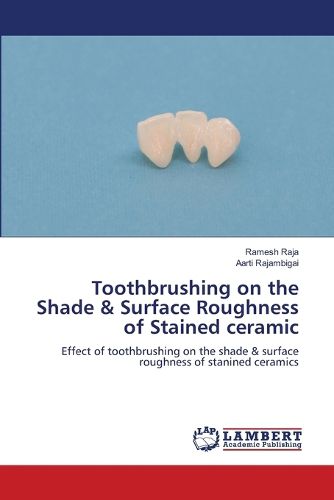Readings Newsletter
Become a Readings Member to make your shopping experience even easier.
Sign in or sign up for free!
You’re not far away from qualifying for FREE standard shipping within Australia
You’ve qualified for FREE standard shipping within Australia
The cart is loading…






This title is printed to order. This book may have been self-published. If so, we cannot guarantee the quality of the content. In the main most books will have gone through the editing process however some may not. We therefore suggest that you be aware of this before ordering this book. If in doubt check either the author or publisher’s details as we are unable to accept any returns unless they are faulty. Please contact us if you have any questions.
Esthetically acceptable restorations have become more attainable due to the improvement in restorative materials.1 All-ceramic restorations are among the most esthetically pleasing substitutes for tooth structure due to their similar optical properties compared to natural dentition.2 Despite the esthetic qualities of all-ceramic materials, restorative dentists may have difficulty choosing the optimal shade for a restoration, because of individual differences in shade perception and the ability to match the natural dentition.3 Therefore, modifications with metallic oxide stains are often required to correct slight shade imperfections when compared to adjacent natural teeth. This process is known as extrinsic staining.4Extrinsic staining is the superficial application of a stain to the outermost layer of a ceramic restoration. It is conventionally applied with a fine porcelain brush in order to recreate the special characteristics required to mimic a natural tooth.4, 5 A potential major drawback of this technique is that the layer of stain is thinly applied and is directly exposed to the oral environment.
$9.00 standard shipping within Australia
FREE standard shipping within Australia for orders over $100.00
Express & International shipping calculated at checkout
This title is printed to order. This book may have been self-published. If so, we cannot guarantee the quality of the content. In the main most books will have gone through the editing process however some may not. We therefore suggest that you be aware of this before ordering this book. If in doubt check either the author or publisher’s details as we are unable to accept any returns unless they are faulty. Please contact us if you have any questions.
Esthetically acceptable restorations have become more attainable due to the improvement in restorative materials.1 All-ceramic restorations are among the most esthetically pleasing substitutes for tooth structure due to their similar optical properties compared to natural dentition.2 Despite the esthetic qualities of all-ceramic materials, restorative dentists may have difficulty choosing the optimal shade for a restoration, because of individual differences in shade perception and the ability to match the natural dentition.3 Therefore, modifications with metallic oxide stains are often required to correct slight shade imperfections when compared to adjacent natural teeth. This process is known as extrinsic staining.4Extrinsic staining is the superficial application of a stain to the outermost layer of a ceramic restoration. It is conventionally applied with a fine porcelain brush in order to recreate the special characteristics required to mimic a natural tooth.4, 5 A potential major drawback of this technique is that the layer of stain is thinly applied and is directly exposed to the oral environment.